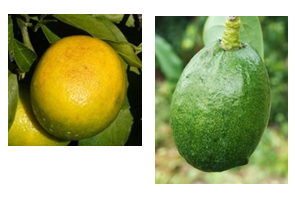Due to the significant impact of global warming and concerns about the relocation of suitable cultivation areas, we have developed a detailed suitability prediction map for long-term production planning of mandarin oranges in Japan. Meanwhile, among subtropical fruit trees expected to benefit from the expansion of suitable cultivation areas due to climate change, we conducted the first-ever suitability prediction for avocados. Our findings revealed that the continued production of mandarin oranges in current growing regions heavily depends on global greenhouse gas emissions, and that suitable areas for avocado cultivation are projected to expand to more than 2.5 times their current size by the middle of this century.
Overview
Compared to crops like rice, which can be cultivated across Japan, fruit trees generally have lower adaptability to climate conditions, resulting in strong regional characteristics in major production areas--such as apples in northern Japan and satsuma mandarins (hereafter referred to as "mandarins") in the warm southwestern regions. Consequently, as global warming progresses, current production areas may become unsuitable for cultivation, posing a significant challenge. In particular, mandarins have a narrow optimal temperature range of just 3°C, with an annual average temperature of 15-18°C, meaning even a 1°C increase can have a substantial impact. In fact, mandarin-producing regions have reported numerous cases of heat-related damage, such as sunburn and puffing. Since mandarin trees are typically cultivated for decades after planting, it is essential to develop long-term production plans tailored to future climate changes in each region.
Although previous studies have attempted to predict suitable cultivation areas for mandarins, they lacked the ability to forecast temperature changes in detail for each region. Moreover, future temperature increases depend on greenhouse gas emissions, making it unclear how much variation this introduces into predictions of suitable area shifts.
On the other hand, it is important not only to address potential damage but also to seize opportunities brought about by climate change. Currently, suitable areas for cultivating subtropical fruit trees such as avocados are mainly limited to island regions like the Nansei Islands and the Izu and Ogasawara Islands. However, there is a possibility that these areas will expand significantly to include parts of Honshu in the future.
To address these challenges, the National Agriculture and Food Research Organization (NARO) developed detailed maps that predict the shifts in suitable cultivation areas for mandarins and avocados by the mid and end of this century. These maps allow for confirmation of suitable area distributions at the individual production region level. Analysis of the prediction results revealed the following:
(1) While suitable areas for mandarin cultivation will gradually shift northward, many regions that become too warm for mandarins will instead become suitable for avocados. Therefore, in addition to transitioning to other citrus varieties that prefer warmer climates, switching to avocado cultivation could also be a viable adaptation strategy.
(2) The continuation of mandarin production in current growing regions is heavily influenced by global reductions in greenhouse gas emissions.
(3) For avocados, by the middle of this century, parts of coastal Honshu and other regions will become suitable for cultivation, with the total suitable area expanding to more than 2.5 times its current size.

Sunburn on Mandarins (Left) and Japan's Main Avocado Variety "Bacon" (Right)
Publication
Sugiura, T., H. Sugiura, S. Konno, T. Date, T. Yoshimatsu, and K. Kisaki. 2024. Assessing the expansion of suitable locations for avocado cultivation due to climate change in Japan and its suitability as a substitute for satsuma mandarins. Journal of Agricultural Meteorology. 80:111-117.
Funding
This research was supported by the Environment Research and Technology Development Fund (JPMEERF20S11806) of the Environmental Restoration and Conservation Agency of Japan, and JSPS KAKENHI Grant Number 23K05233.




